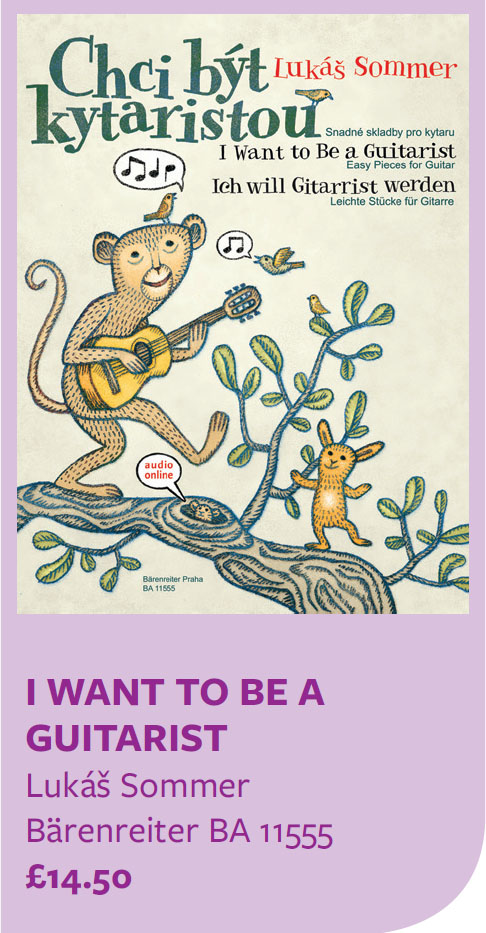
The Chanterelle Guitar Anthology
Chanterelle is a well-known publisher in the guitar world, with a reputation for producing reliable scores and printing them clearly, all with an emphasis on attention to detail.
The introduction to this set of pieces is candid: it is a sampler album designed to promote Chanterelle's attractive and wide-ranging catalogue.
As such, it visits pieces for which no experienced guitarist needs an introduction, as well as providing some rarer items, most of which could act as excellent shorter concert pieces or effective encores.
Spanning about 120 years in 72 pages, this collection is edited expertly by Michael Macmeeken and Alberto Mesirca, the latter providing tips on preparing and performing the pieces, which are found on the accompanying CD. Advice covers not only musical accents but articulation too. Most comments are very pragmatic and insightful; a reference to an ‘adventurous’ arpeggio pattern in Legnani's ‘Caprice 33’ seems slightly odd (as it isn't really at all) but these aspects can be regarded as subjective. The description is more worthy in the case of the first piece, Lhoyer's extraordinary ‘Exercise 3’. The informative commentary from Mesirca is typical of Chanterelle's excellent musicology and care, which are found in all of its series.
The pieces featured are from familiar and reliable composers: Aguado (nine lesson pieces and a study); Carcassi; Sor; Tárrega; Legnani; Coste; Mertz and Sagreras (five pieces). Also featured, in the manner of bonus tracks are single items by Antoine de Lhoyer and Regondi, plus two pieces by Tárrega's pupil Llobet and two Ponce Preludes. Barrios is represented by three short and accessible delights here, the penultimate composer in the collection before a final single Segovia Study. The juxtaposition is pertinent and deserving, enough though it might have displeased Segovia.
Many pieces are a page, some are two, while others make up only half. Segovia and Regondi's are treated to three each – the latter's first Study is typically virtuosic in nature but very approachable.
This collection is definitely a bargain, with the price of each piece averaging out to less than 50p, although many experienced players (for whom this book is intended) may well have much of the music in their collections already. Most of the pieces will be known, some very well, while lesser known gems are offered up too. Perhaps not Chanterelle's main aim for this volume, but it is an excellent collection for teachers who have intermediate and/or advanced pupils. Print quality, as expected, is exemplary.

I Want to Be a Guitarist
This a breath of fresh air: a fun and creative option for the young player. While this collection is evidently aimed at early guitarists, musicians of any age could gain something from this slender, attractive volume. Published by Bärenreiter in the Czech Republic, the text is presented in Czech, German and English.
After making your way past the rather intense looking monkey on the cover, a happy and slightly mischievous cat greets us as we open the book. Artwork appears throughout, accompanying the music, sometimes illustrating the sounds or subject matter, on other occasions it is a part of the notation itself. This book has been designed as an experience, it isn't peppered with random or meaningless graphics.
Invitations to engage with the compositions are there from the very start with helpful guidelines, tips and suggestions. References to the right hand appear in the first piece, ‘Naughty Pup’, and are repeated throughout. Some advice is pragmatic, while others are more focused on fun, though with an underlying serious purpose. All comments here ultimately encourage a cognitive and creative approach to learning. The colour drawings on each page are visually bold, sometimes subtle in meaning, but often an integral part of the score.
‘Greetings to the Sun’ is therefore both visually pleasing and a joy to perform. The centre of the image contains a dyad, while the golden sun's flames lick at phrases around it. These can be played at will after each rendition of the dyad. Freedoms with other aspects, such as dynamics, are invited elsewhere. ‘In the Pharaoh's Footsteps’ also relies heavily on visual learning: the player follows one-bar phrases through a pyramid until coming to rest in the tomb.
There are elements of progression, with techniques building as pages are turned. A wide range of emotions, sensations and musical expressions are explored: enough to excite an array of musical tastes. The online audio, as promised on the cover, allows you access recordings of all 33 pieces on the publisher's website, a link for which is found on the verso of the title page.
Most composers have occasion to wish they'd written a particular piece of music. In this case, I wish I'd written the entire book! Sommer has composed one of the most exciting collections of guitar music I've seen in years.








